Françoise Beaufays
Extending Multilingual Speech Synthesis to 100+ Languages without Transcribed Data
Feb 29, 2024



Abstract:Collecting high-quality studio recordings of audio is challenging, which limits the language coverage of text-to-speech (TTS) systems. This paper proposes a framework for scaling a multilingual TTS model to 100+ languages using found data without supervision. The proposed framework combines speech-text encoder pretraining with unsupervised training using untranscribed speech and unspoken text data sources, thereby leveraging massively multilingual joint speech and text representation learning. Without any transcribed speech in a new language, this TTS model can generate intelligible speech in >30 unseen languages (CER difference of <10% to ground truth). With just 15 minutes of transcribed, found data, we can reduce the intelligibility difference to 1% or less from the ground-truth, and achieve naturalness scores that match the ground-truth in several languages.
Improving Speech Recognition for African American English With Audio Classification
Sep 16, 2023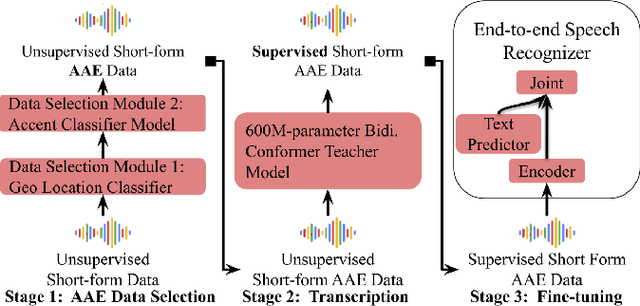
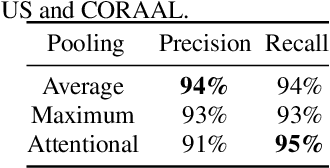
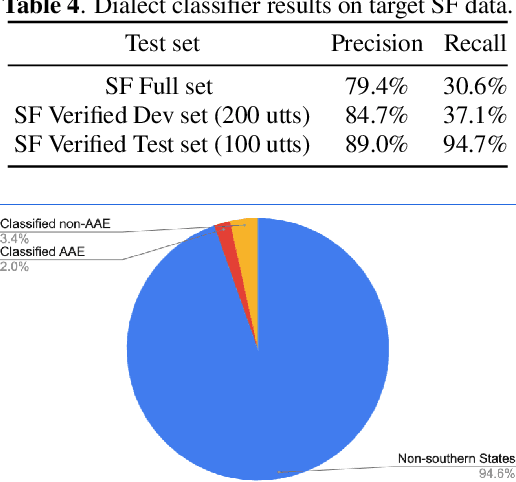
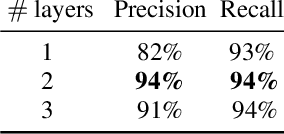
Abstract:Automatic speech recognition (ASR) systems have been shown to have large quality disparities between the language varieties they are intended or expected to recognize. One way to mitigate this is to train or fine-tune models with more representative datasets. But this approach can be hindered by limited in-domain data for training and evaluation. We propose a new way to improve the robustness of a US English short-form speech recognizer using a small amount of out-of-domain (long-form) African American English (AAE) data. We use CORAAL, YouTube and Mozilla Common Voice to train an audio classifier to approximately output whether an utterance is AAE or some other variety including Mainstream American English (MAE). By combining the classifier output with coarse geographic information, we can select a subset of utterances from a large corpus of untranscribed short-form queries for semi-supervised learning at scale. Fine-tuning on this data results in a 38.5% relative word error rate disparity reduction between AAE and MAE without reducing MAE quality.
Lego-Features: Exporting modular encoder features for streaming and deliberation ASR
Mar 31, 2023Abstract:In end-to-end (E2E) speech recognition models, a representational tight-coupling inevitably emerges between the encoder and the decoder. We build upon recent work that has begun to explore building encoders with modular encoded representations, such that encoders and decoders from different models can be stitched together in a zero-shot manner without further fine-tuning. While previous research only addresses full-context speech models, we explore the problem in a streaming setting as well. Our framework builds on top of existing encoded representations, converting them to modular features, dubbed as Lego-Features, without modifying the pre-trained model. The features remain interchangeable when the model is retrained with distinct initializations. Though sparse, we show that the Lego-Features are powerful when tested with RNN-T or LAS decoders, maintaining high-quality downstream performance. They are also rich enough to represent the first-pass prediction during two-pass deliberation. In this scenario, they outperform the N-best hypotheses, since they do not need to be supplemented with acoustic features to deliver the best results. Moreover, generating the Lego-Features does not require beam search or auto-regressive computation. Overall, they present a modular, powerful and cheap alternative to the standard encoder output, as well as the N-best hypotheses.
Google USM: Scaling Automatic Speech Recognition Beyond 100 Languages
Mar 03, 2023
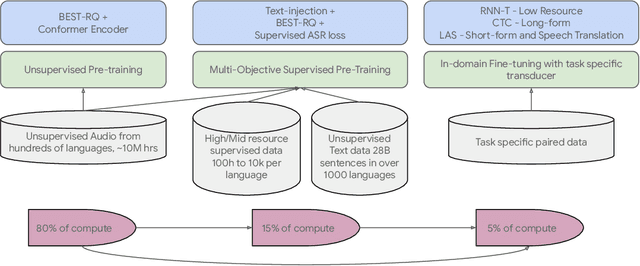


Abstract:We introduce the Universal Speech Model (USM), a single large model that performs automatic speech recognition (ASR) across 100+ languages. This is achieved by pre-training the encoder of the model on a large unlabeled multilingual dataset of 12 million (M) hours spanning over 300 languages, and fine-tuning on a smaller labeled dataset. We use multilingual pre-training with random-projection quantization and speech-text modality matching to achieve state-of-the-art performance on downstream multilingual ASR and speech-to-text translation tasks. We also demonstrate that despite using a labeled training set 1/7-th the size of that used for the Whisper model, our model exhibits comparable or better performance on both in-domain and out-of-domain speech recognition tasks across many languages.
Federated Pruning: Improving Neural Network Efficiency with Federated Learning
Sep 14, 2022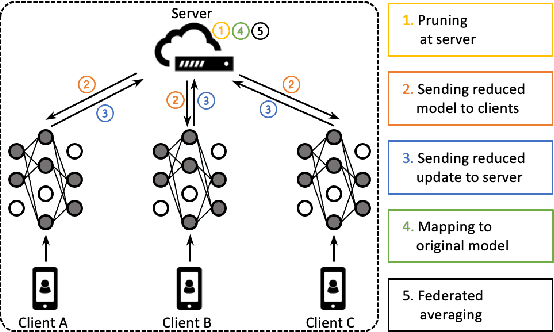
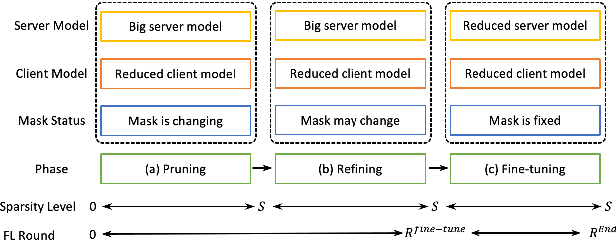

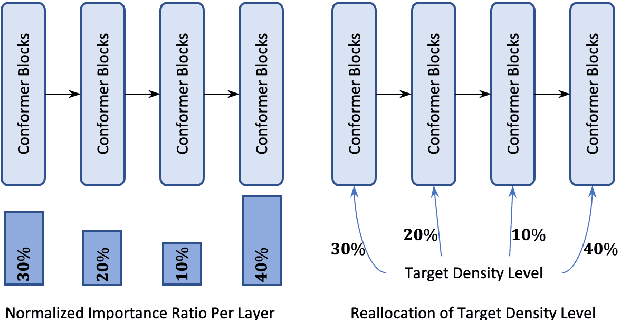
Abstract:Automatic Speech Recognition models require large amount of speech data for training, and the collection of such data often leads to privacy concerns. Federated learning has been widely used and is considered to be an effective decentralized technique by collaboratively learning a shared prediction model while keeping the data local on different clients devices. However, the limited computation and communication resources on clients devices present practical difficulties for large models. To overcome such challenges, we propose Federated Pruning to train a reduced model under the federated setting, while maintaining similar performance compared to the full model. Moreover, the vast amount of clients data can also be leveraged to improve the pruning results compared to centralized training. We explore different pruning schemes and provide empirical evidence of the effectiveness of our methods.
Online Model Compression for Federated Learning with Large Models
May 06, 2022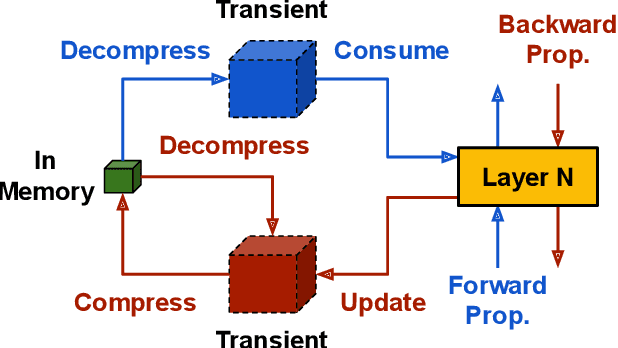
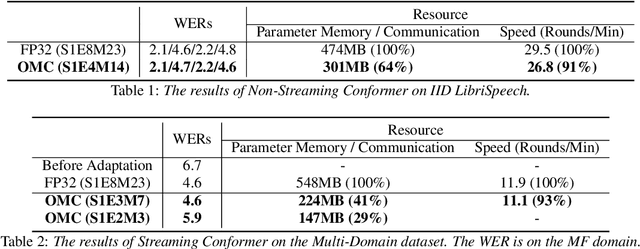

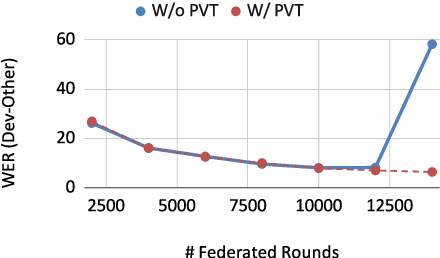
Abstract:This paper addresses the challenges of training large neural network models under federated learning settings: high on-device memory usage and communication cost. The proposed Online Model Compression (OMC) provides a framework that stores model parameters in a compressed format and decompresses them only when needed. We use quantization as the compression method in this paper and propose three methods, (1) using per-variable transformation, (2) weight matrices only quantization, and (3) partial parameter quantization, to minimize the impact on model accuracy. According to our experiments on two recent neural networks for speech recognition and two different datasets, OMC can reduce memory usage and communication cost of model parameters by up to 59% while attaining comparable accuracy and training speed when compared with full-precision training.
Extracting Targeted Training Data from ASR Models, and How to Mitigate It
Apr 18, 2022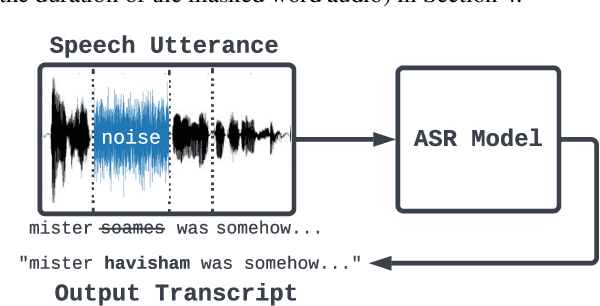
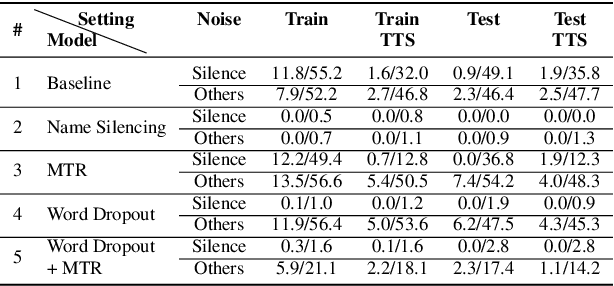
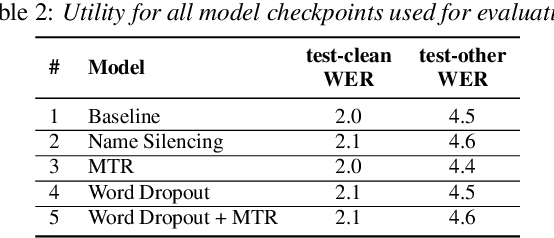
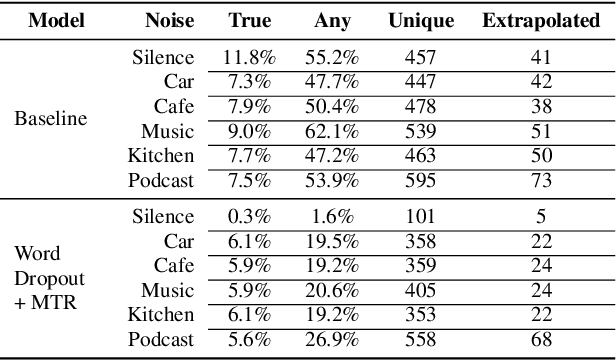
Abstract:Recent work has designed methods to demonstrate that model updates in ASR training can leak potentially sensitive attributes of the utterances used in computing the updates. In this work, we design the first method to demonstrate information leakage about training data from trained ASR models. We design Noise Masking, a fill-in-the-blank style method for extracting targeted parts of training data from trained ASR models. We demonstrate the success of Noise Masking by using it in four settings for extracting names from the LibriSpeech dataset used for training a SOTA Conformer model. In particular, we show that we are able to extract the correct names from masked training utterances with 11.8% accuracy, while the model outputs some name from the train set 55.2% of the time. Further, we show that even in a setting that uses synthetic audio and partial transcripts from the test set, our method achieves 2.5% correct name accuracy (47.7% any name success rate). Lastly, we design Word Dropout, a data augmentation method that we show when used in training along with MTR, provides comparable utility as the baseline, along with significantly mitigating extraction via Noise Masking across the four evaluated settings.
Production federated keyword spotting via distillation, filtering, and joint federated-centralized training
Apr 11, 2022
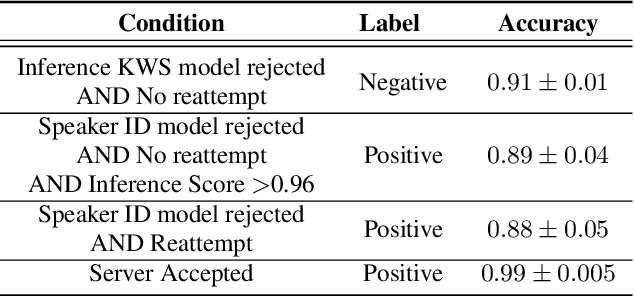
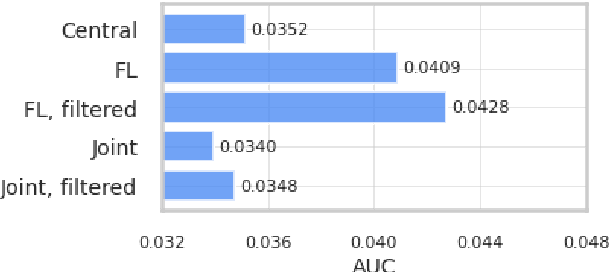

Abstract:We trained a keyword spotting model using federated learning on real user devices and observed significant improvements when the model was deployed for inference on phones. To compensate for data domains that are missing from on-device training caches, we employed joint federated-centralized training. And to learn in the absence of curated labels on-device, we formulated a confidence filtering strategy based on user-feedback signals for federated distillation. These techniques created models that significantly improved quality metrics in offline evaluations and user-experience metrics in live A/B experiments.
Handling Compounding in Mobile Keyboard Input
Jan 17, 2022Abstract:This paper proposes a framework to improve the typing experience of mobile users in morphologically rich languages. Smartphone keyboards typically support features such as input decoding, corrections and predictions that all rely on language models. For latency reasons, these operations happen on device, so the models are of limited size and cannot easily cover all the words needed by users for their daily tasks, especially in morphologically rich languages. In particular, the compounding nature of Germanic languages makes their vocabulary virtually infinite. Similarly, heavily inflecting and agglutinative languages (e.g. Slavic, Turkic or Finno-Ugric languages) tend to have much larger vocabularies than morphologically simpler languages, such as English or Mandarin. We propose to model such languages with automatically selected subword units annotated with what we call binding types, allowing the decoder to know when to bind subword units into words. We show that this method brings around 20% word error rate reduction in a variety of compounding languages. This is more than twice the improvement we previously obtained with a more basic approach, also described in the paper.
Revealing and Protecting Labels in Distributed Training
Oct 31, 2021

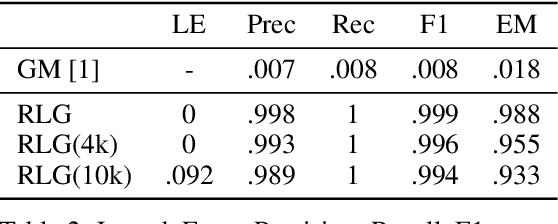

Abstract:Distributed learning paradigms such as federated learning often involve transmission of model updates, or gradients, over a network, thereby avoiding transmission of private data. However, it is possible for sensitive information about the training data to be revealed from such gradients. Prior works have demonstrated that labels can be revealed analytically from the last layer of certain models (e.g., ResNet), or they can be reconstructed jointly with model inputs by using Gradients Matching [Zhu et al'19] with additional knowledge about the current state of the model. In this work, we propose a method to discover the set of labels of training samples from only the gradient of the last layer and the id to label mapping. Our method is applicable to a wide variety of model architectures across multiple domains. We demonstrate the effectiveness of our method for model training in two domains - image classification, and automatic speech recognition. Furthermore, we show that existing reconstruction techniques improve their efficacy when used in conjunction with our method. Conversely, we demonstrate that gradient quantization and sparsification can significantly reduce the success of the attack.
 Add to Chrome
Add to Chrome Add to Firefox
Add to Firefox Add to Edge
Add to Edge